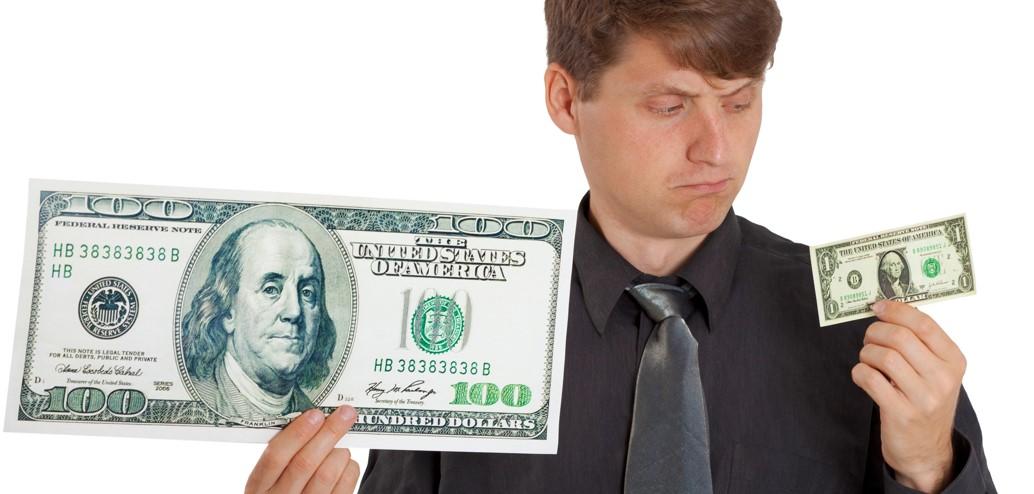
Statism Is Destroying Real Wages
When we read about the US economy, we often get wage growth as a signal of a strong labor market. It is hardly a strong market when the labor participation rate and the employment to population ratio are both below the February 2020 level and have been stagnant for months.
Additionally, the headline figure of 4.6 percent annualized wage growth is misleading, as it shows a nominal and average figure that disguises a much tougher environment. According to the Bureau of Labor Statistics, from December 2021 to December 2022, real average hourly earnings decreased 1.1 percent, seasonally adjusted.
When we look at wage growth by sector, the picture is even worse. According to JP Morgan, no sector in the US economy has seen a rise in wages that covers inflation. Only two sectors in the US economy, Information and Financial Services, show more than 2 percent wage growth in annualized seasonally adjusted January figures. Furthermore, Construction, Manufacturing, Education and Health Services, Retail, Leisure and Hospitality as well as Professional Business Services show a negative nominal annualized change of minus two to minus 6 percent. This means an even worse real figure after discounting inflation.
When we look at such a scary loss of real disposable income, two things come to mind. First, in the euro area it is even worse, as there is barely any nominal wage growth to start with. Second, and most important, citizens do not understand it but the middle class is being eroded from the combination of inflationary policies, money printing, bloated government spending, and protectionism, trade barriers, and regulatory burdens.
Inflation is not a coincidence; it is a policy. Massively increasing money supply has brought levels of core inflation that many would have never imagined. Now, the narrative is to try to convince all of us that an annualized CPI of 5 percent is “lower prices,” when the reality is that inflation is accumulated and citizens are poorer every year.
Think about this. If even in the years when the mainstream said that there was “no inflation” we all saw the cost of housing, healthcare, education, and nonreplicable goods and services rise well above real wage growth, imagine what is happening now to households.
Inflation may be cooling but that does not mean low prices or even improving living standards.
How is consumption holding up in such a negative environment? Basically because citizens are using their savings or taking on more debt, hoping that the message coming from authorities about lower inflation may bring prices back to where they were in 2019. However, that is unlikely unless there is a massive crisis or governments cut drastically their enormous spending plans and protectionist agenda.
When governments announce “anti-inflation” plans based on spending even more of what is already a massive budget with an enormous deficit, they are not combating inflation, they are prolonging it.
Governments do not need to implement anti-inflation measures because it is government spending and political trade barriers what causes inflation. Inflation is not an external phenomenon; it is the destruction of the purchasing power of the currency due to political decisions. The so-called “supply chain disruptions” were nothing less that government barriers to trade added to more units of currency going to relatively scarce assets. Commodity inflation is always more units of currency going to relatively scarce assets. It is so evident it was a monetary phenomenon that in the middle of the Ukraine invasion commodities made a U-turn and ended 2022 flat or down on the year after a couple of rate hikes from the Fed.
One of the worst inflationary policies is protectionism. Protectionism places barriers to trade under the promise that we will buy and sell our own products and live happily ever after. The problem is that protectionism also makes goods and services less available and more expensive, and reducing the purchasing power of the currency through massive printing diminishes internal demand and makes everyone poorer.
The reader may say that governments know the negatives of excessive spending, high debt financed by money printing and imposing trade barriers, so why implement these policies? Because government is the first beneficiary of inflation.
Artificial money creation is never neutral. Government spending is always paid by you, even if you are poor, through taxes, inflation, or both.
The narrative now is to convince you that 5 percent annual inflation is a step in the right direction just to make you believe that three or four percent will be a success. By the time you accept four percent annual inflation as an acceptable outcome, the purchasing power of your wages will have fallen by more than twenty percent. The outcome will be more citizens dependent on government support paid with constantly depreciated currencies. Meanwhile, whatever you may save will be eroded by negative real rates, financial repression.
Inflation did not come out of the blue. It was a policy. And inflation, currency debasement, and financial repression are a massive transfer of wealth from savers and the middle class to governments that constantly increase their size relative to the economy.
Many will blame capitalism for all I have mentioned, but the reality is that the policy of middle-class impoverishment comes from two decades of rising interventionism, more government interference in the economy, rising protectionism, and widespread inflationism. None of that has anything to do with capitalism and everything to do with statism.




